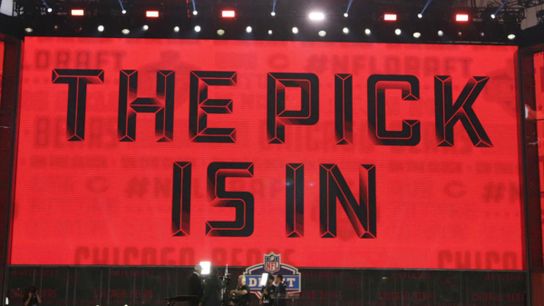By Anthony Villiotti
SteelerNation.com
If you are a football fan, there is nothing quite like the afterglow of Draft Day. Every draft choice, whether an early round choice or a selection at the end of the draft, seemingly has the potential to fill the needs of your favorite team.
But how rosy is the picture when the draft is evaluated with the benefit of hindsight? For some reason that I can’t explain to my wife, I have an intense interest in this historical evaluation. I am an old timer and have been following the draft since the Pittsburgh Steelers drafted "Mean" Joe Greene in 1969. In the latest variation of my fetish, I have been tracking scrimmage plays by player since 2012 and have used that data base to analyze draft results.
Player evaluation is not an exact science, making the draft risky by nature. Injuries and off-field issues compound that risk. The Steelers, like every NFL team, have experienced these situations with players like Senquez Golson, a second round selection in 2015, who never appeared in an NFL game due to a variety of injuries, and Gabe Rivera, a first round selection in 1983 who was paralyzed in an automobile accident midway through his rookie season.
My analysis makes no allowance for injuries or off-field issues. That is part of the draft risk and is reflected in the results. I considered two separate questions. First, how many players will be significant contributors in their rookie season? A significant contributor is defined as playing an average of 25 scrimmage snaps per game. The second question is how many players will be significant contributors over their career? For this purpose, a significant contributor is defined as playing at least three seasons and averaging 25 scrimmage snaps per game.
An analysis of the 2012-2019 drafts tells us that an average of 73 players will be significant contributors in their rookie season, with the range being between 68 and 82. As you might imagine, this varies by round. A breakdown of the 73 players by round (with the first round divided into two segments) is as follows. I divided the first round into two components because my analysis has consistently shown that selections one through 11 outperform the rest of the first round.
| Selections 1-11 (11 picks) | 9 | Round 4 (40 selections | 8 |
| Rest of Round 1 (21 picks) | 14 | Round 5 (33 selections) | 6 |
| Round 2 (32 selections) | 18 | Round 6 (35 selections) | 3 |
| Round 3 (42 selections) | 14 | Round 7 (41 selections) | 1 |
It is also worth noting that history tells us that 51 players will not see the field in their rookie season.
To address the second question, I used the results of the 2012-2017 drafts to estimate the likely career outcomes of 2020 draft selections. This analysis showed that about 100 players will end up with a career of at least three years playing an average of at least 25 snaps per season. As expected, this varies by round selected.
| Selections 1-11 (11 picks) | 10 | Round 4 (40 selections | 14 |
| Rest of Round 1 (21 picks) | 18 | Round 5 (33 selections) | 9 |
| Round 2 (32 selections) | 22 | Round 6 (35 selections) | 5 |
| Round 3 (42 selections) | 19 | Round 7 (41 selections) | 3 |
At the other end of the spectrum, it worth noting that about 24 players will never play in an NFL game, 26 will play only one season and 27 will play only two seasons.
So what do you think, Steeler Nation? Let us know your thoughts about this draft analysis in the comment section below!
#SteelerNation


